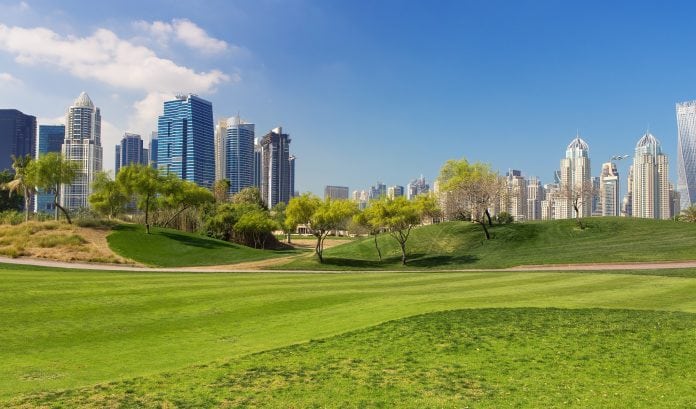
While low oil prices weighed heavily on many of Dubai’s trading partners and neighbours, the emirate delivered a strong economic performance in 2016, buoyed by growth in key non-hydrocarbons segments, which provided an important buffer against external challenges.
Full-year growth was expected to reach 3.7%, according to the IMF, up from 3.5% in 2015 and well above the projected average for the UAE of 2.4%.
Additional infrastructure spending in the lead-up to Expo 2020 Dubai, together with ongoing expansion in areas such as retail and tourism, is expected to support new growth in the coming year and beyond.
Macro headwinds
Despite performing well, Dubai found itself grappling with the knock-on effects of a difficult external climate. The emirate faced new barriers to incoming investment, as several markets that have traditionally channelled funds into Dubai, including India, the eurozone, the UK, Turkey and Egypt, saw the value of their currencies slide by between 8.5% and 156% against the US dollar in 2015 and 2016.
The performance of the Dubai-based Emirates airline was similarly hampered by a strong dollar, according to a press release issued by the carrier in November. Following a strong performance between April and September in 2015, profits in the same period last year were down 75%.
Dubai’s real estate sector also faced a challenging operating environment, with excess supply putting pressure on the hospitality and real estate market, according to US real estate company CBRE. However, the firm noted that the contraction in sales and earnings was marginal, with average rental rates declining by only 1% year-on-year in the third quarter of 2016.
Growth drivers
Retail was a particularly bright spot in Dubai’s economy, with full-year growth for 2016 forecast to reach 7.7%, according to data from the UK-based Centre of Retail Research. Further growth appears likely in the near term, and a report from the Dubai Chamber is predicting a compound annual growth rate (CAGR) of 8.1% between 2017 and 2020.
Online retail, in particular, is seen as ripe for investment, due to current low penetration rates. Online shopping currently accounts for less than 2% of Dubai’s total retail sales by value, according to Dubai Chamber, significantly lower than in US and European markets, where the figure is between 17% and 20%. However, medium-term growth for internet retailing is forecast to increase at a CAGR of up to 34%.
The emirate will also be looking to its construction sector to help counter external headwinds in 2017. The pipeline of private and Dubai government-backed projects has put the industry on course for growth of at least 4% this year, according to industry media reports, with further expansion expected in the lead-up to Expo 2020.
Government ups spending
The emirate’s strategy is focused on retaining its position as a key regional player in areas such as trade and logistics, tourism, retail, entrepreneurship and technology.
In the 2017 budget, launched on December 21, the Dubai government announced a 27% increase in annual spending on infrastructure ahead of Expo 2020 and an overall rise in expenditure of 3%. Funding for research and development will be increased by Dh700m ($190.6m), while exports will receive an additional Dh16bn ($4.4bn).
Greater outlays are also expected in industry. In June Dubai launched its 2030 Industrial Strategy, which aims to make the emirate “an international hub for knowledge-based innovation and sustainable industrial activities”.
The strategy focuses on six subsectors: maritime, aerospace, pharmaceuticals and medical equipment, fast-moving consumer goods, aluminium and fabricated metals, and machinery equipment. The government is looking to create more than 27,000 specialised jobs through the initiative.
Theme parks boost for tourism
An investment drive is also under way across Dubai’s tourism industry. Several large-scale theme parks opened their gates in 2016, giving the emirate an important niche market.
With little in the way of regional competition, Dubai has cornered much of an important family demographic that, until now, would have needed to travel to the US or Disneyland Paris for a comparable experience.
In September the world’s largest indoor theme park – the $1bn, 140,000-sq-metre IMG Worlds of Adventure – opened in the City of Arabia, on the outskirts of Dubai.
This was followed in December by the launch of the Dh13bn ($3.5bn) Dubai Parks and Resorts. Located in Jebel Ali, its footprint spans some 2.8m sq metres, with three internal parks – LEGOLAND Dubai, Bollywood Parks Dubai and Motiongate Dubai – now open for business. A fourth park, the Dh2.6bn ($1.7bn) Six Flags Dubai, is under construction and scheduled to open in 2019.
*By Oxford Business Group























![The Square at Nad Al Sheba Gardens Now Open hope tax season treated you well! Just checking in—ready to refocus on growing your business? I remember how we discussed scaling your [specific aspect of their business, e.g., online presence] but paused due to time constraints. We now offer a streamlined 6-month plan that delivers real results without adding to your workload. Let me know if you'd like to chat—I’d love to help you pick up where we left off!](https://www.dubaichronicle.com/wp-content/uploads/2024/11/The-Square-5-218x150.jpg)








